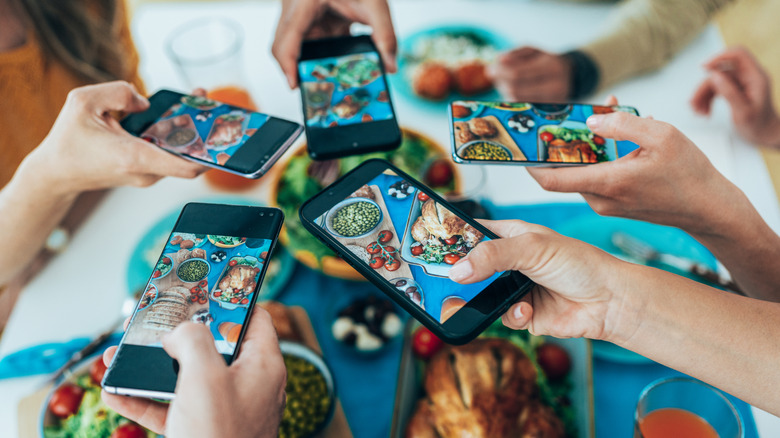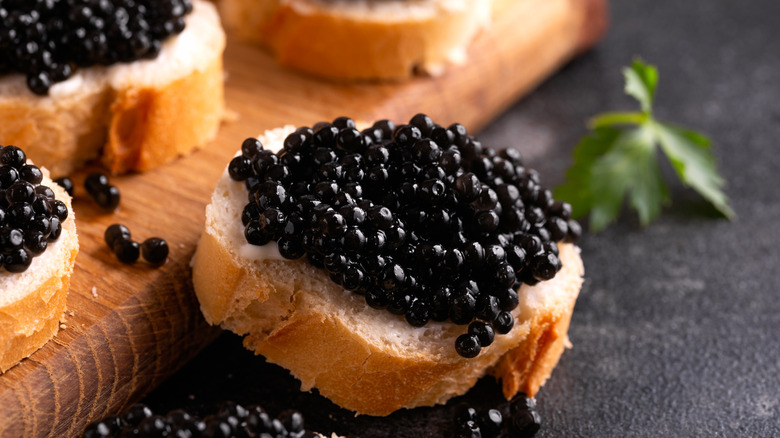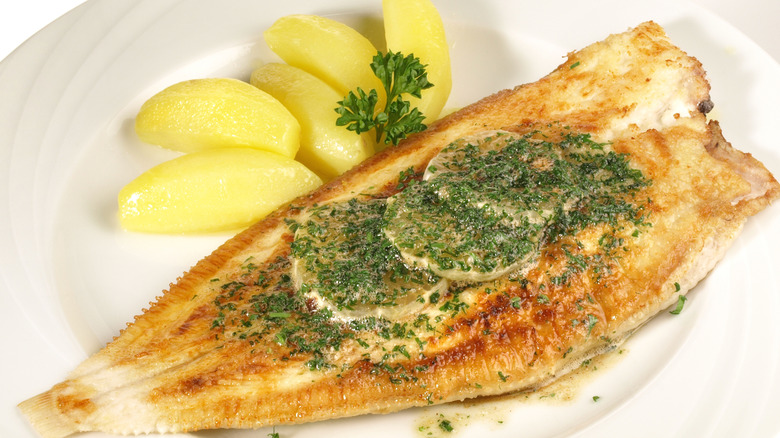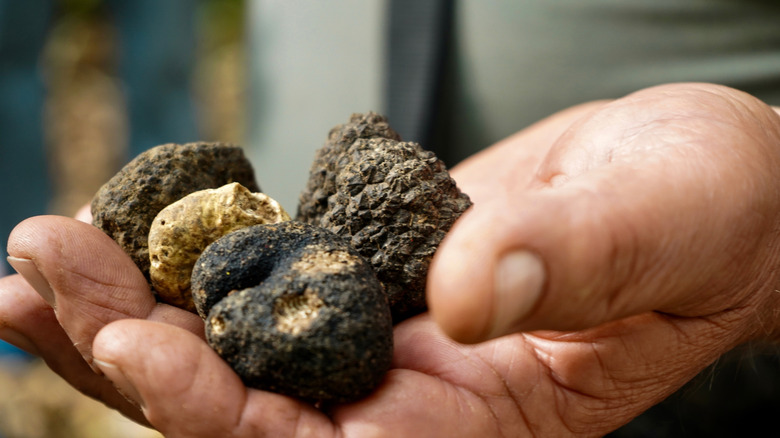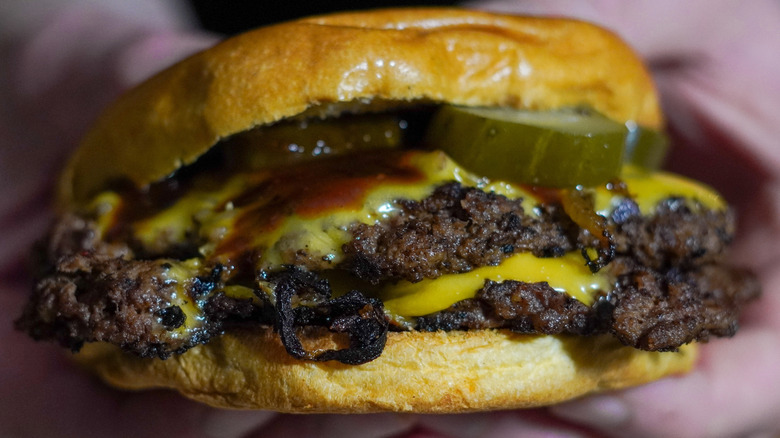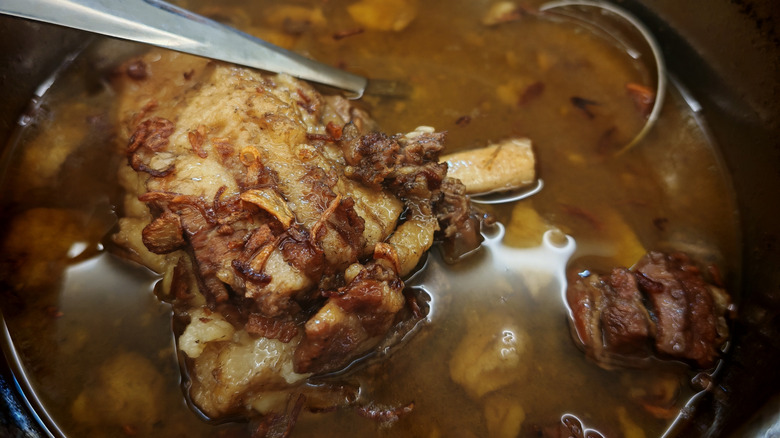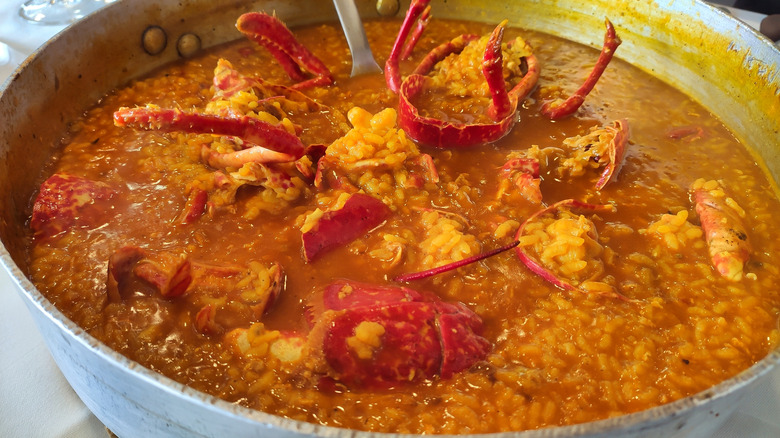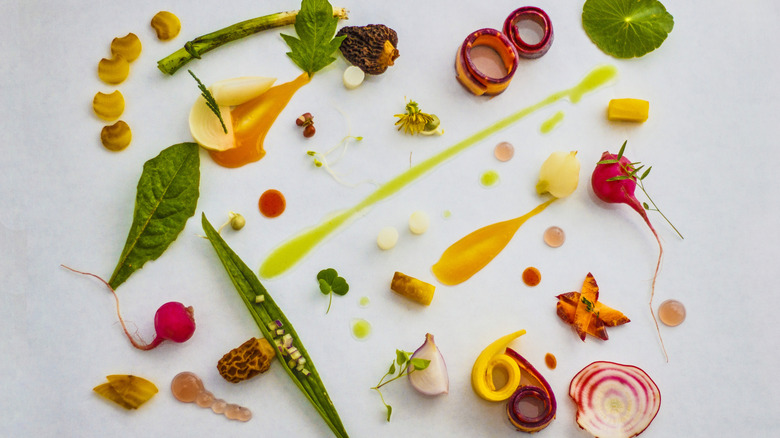These Are The Food Trends Chefs Want Everyone To Forget About In 2026
Food is not only a necessity for survival, it's also something that gives us all immense joy, satisfaction, and enjoyment. When we're not scarfing down what's on our plates, our mouths are put to work to talk about things, and many times, we're talking endlessly about food, with friends, or to even total strangers through social media. Year after year, new products, recipes, and wild collaborations come out of nowhere to take hold of our attention, going viral, and often going way overboard. As the calendar inches toward 2026, what food trends from 2025 are perhaps best left in the past?
Tired of Dubai chocolate, hot honey, and cottage cheese mixed into everything? Probably. While we all have our own strong opinions on the matter, Mashed was curious what some of the world's best and rising star chefs, influencers and content creators had to say about it all. Luckily we caught up with many of them at the 2025 New York City Wine & Food Festival to pick their brains on the subject matter. Some of the answers from the tea spilled were aligned, while others were surprising, or downright hilarious. All in all, the answers were as sharp as a knife and as hot as an air fryer. Let's get cooking, shall we?
Less social media and viral moments
Out of all the food trends that struck a nerve with chefs and influencers, the top gripe involved some aspect of social media. It's basically impossible these days to escape seeing someone's meal being cooked up or gobbled down on TikTok, Instagram, or even spotting this spectacle happen at a restaurant.
La TropiKitchen owner Stephanie Bonnin wants to see phones less at the table, pleading "to push ourselves to interact with our family, with our friends." She added that you should "open your eyes, open your senses. Just follow your nose, follow your senses, and find places." Ahmad Alzahabi shares delicious dishes through his The Golden Balance handle, but shared that he'd like to move away from everyone, including himself, by proclaiming that "everything has to be the best ever. ... I think food and culture needs to be appreciated a lot past just a trend."
Tyler Speegle also spreads deliciousness through social media, but has had enough of over the top cooking videos that are "extremely wasteful and [that] no one's going to eat." Fox & the Knife chef Karen Akunowicz is similarly aligned, and has seen one too many gross novelty TikTok videos. She's looking to move away from the artifice, and return to "just real cooking." Preppy Kitchen's John Kanell would like viral videos to stop turning restaurants into places everyone and their mother must flock to. As a father, he'll take a hard pass on long lines, saying he doesn't "like to wait." Who does?
Caviar
Just hearing the word "caviar" exudes a touch of class. The salted roe eggs of a large fish, particularly sturgeon, have been enjoyed since antiquity. It was raised to luxurious heights when the Russian aristocracy started to indulge in it, which carried over into the 20th century as an expensive treat usually enjoyed by those who are well to do. In the 21st century, caviar began to become more ubiquitous, even commonplace, popping up on restaurant menus in unexpected ways. Caviar topped tater tots or fried chicken anyone?
For some chefs, while they're fans of the glistening black orbs, they'd also be okay if there were perhaps less of them floating around. Pecking House's Eric Huang cooks up all kinds of fried goodness, but don't look for caviar to top any of his menu items. "We got to be done with caviar," he said. "It's everywhere. There's no reason for it to be everywhere. People put it everywhere because it makes restaurants money." Vegan chef Shenarri "Greens" Freeman concurs with the money angle and that it's lost part of its specialness, noting, "It's very accessible. It doesn't really seem as exclusive anymore." Freeman would "like to see people get a little bit more creative and try something else instead of caviar." Chef Jae Lee of Korean-American gastropub Nowon fame could live without caviar bumps: "I think that's kind of stupid. If you want caviar, just eat it."
Overpriced fish dishes
Arby's may have the meats, but one of the most famous names in carnivorous purveying is Mr. Pat LaFrieda. While he has plenty of great tips of grilling steaks, he also has some sharp opinions about food beyond the turf that dwells in the surf. The one trend he'd like to say goodbye to most in 2026 is fish in general. He then got very specific and made the grand statement that "Dover sole is dead." Guess that means he won't be taking chef Thomas Keller's Masterclass on making the flatfish with pommes château anytime soon.
The central issue LaFrieda has with fish is the price tag. He added, "Enough is enough ... like feeding us fluke and flounder and charging us $195?" While LaFrieda may be exaggerating on such a lofty number, he's not entirely wrong as it's been a growing concern as of late. Ever since COVID-19, rising supply costs have necessitated literally passing the buck(s) along to the customer. The surge in cost even prompted a 2022 New York Post article entitled, "Is Dover sole worth $82? Rising prices test NYC diners." To Pat LaFrieda, the answer is a firm "no."
Truffles
Like with caviar, truffles have long been a staple of fine dining, enhancing dishes with its earthy full flavor, as well as adding an air of sophistication to any affair. This rare fungi that grows near the roots of trees has been enjoyed for centuries, and shows no signs of slowing down. It can be found thinly shaved over pasta, infused into oils, butters, and sauces, and piggybacks itself quite nicely into butters and honeys.
Chef Emily Yuen has honed her kitchen skills across the globe, but at her current output — Lingo in Greenpoint, Brooklyn — you won't find any truffles used in the making of her unique Japanese-American fare. Chef Yuen plainly said, "Let's take a break from truffles. I'm not going to lie, I love a good truffle popcorn, but let's move on to something new." Luckily Yuen has an idea for something new — seaweed. She said it's going to be the next big thing, adding, "I'm all about seaweed. Everyone should be using seaweed. It's so sustainable in everyone's food."
Thin smash burgers
At one point a hamburger was just a hamburger — a ground beef patty sandwiched between a pair of buns. Today, a hamburger can be so many things, and one of the most popular styles to grill up is a smash burger. While its exact birthdate is murky, this pressed patty with the crusty edges has been delighting diners since at least the first half of the 20th century.
If you ever wanted to know all the juicy details of what a smash burger should and could be, look no further than burger scholar George Motz. Motz has crisscrossed the United States, visiting hundreds of burger joints, and has been spreading his knowledge and know-how in a "Hamburger America" book, documentary, and now physical restaurant of the same name. One thing that has been bothering of late is the "out of control" thinness of the smash burger cooked up by others. While crispy is the key with these burgers, Motz said these lean patties are turning the final product "into beef crackers."
If you ever want to see and taste what it's supposed to look like, be sure to head to the Hamburger America establishment in New York City. Motz says it starts with "just literally a smashed ball of beef. It's got a little thickness to it. That's the way it's supposed to be. That's the traditional way, right there. That's it."
Oxtail
Muhammad Abdul-Hadi is the maestro behind Philadelphia's Down North Pizza, serving up mouthwatering square pies, while also giving back to his community. While he has plenty of beefy ingredients topping his pizza, one you probably won't see joining the lineup anytime soon is oxtail.
Oxtail isn't a piece of meat culled from the tail of an actual ox, but that of any beef animal like a cow. When raw, it sort of looks like a flower, with the meat as red petals, and the white bone at its center, the pistil. This gelatinous and tender piece of meat has been a secret weapon to enrich soups and stews from France to Jamaica, and was even once sold as a Campbell's soup flavor.
For Abdul-Hadi, he admitted, "I've just had enough of it." He elaborated by saying, "I just feel like it's taken away the integrity of oxtail because people are just using it. ... I'm not from the islands, but I feel like people are using it in ways that maybe they shouldn't be."
Giant bones and shells in noodle soups
We're blessed to live in a world with so many kinds of hearty soups to sip up. Some of the best are filled with noodles, as well as ones swimming with seafood, like a nice Cioppino. A Venn diagram where both kinds of soups intersect, and play nice together, is a real treat. However, sometimes navigating a soup like this may be more trouble than it's worth.
Chef Helen Nguyen is well versed in seafood and noodle soups, serving up Vietnamese specialities at her New York outpost Saigon Social, and she had a bone to pick about bones and shells in noodle soups. She noted, "I feel like some restaurants will throw in humongous bones, like full lobster. It's really hard to eat, like physically." Chef Nguyen added, "I think aesthetically it looks really fun and really cool, but logistically you don't want a whole head of a lobster in there, or just a whole bone where you have to use a knife to carve it to eat it along with your noodles in soups."
Buldak noodles wrapped in spring rolls
For the longest time, the biggest names in instant ramen lining the shelves of American grocery stores, and the bellies of customers hailed from Japan, like Nissin's Top Ramen and Cup Noodles, and Maruchan's Instant Lunch. Korean culture and cuisine has rapidly grown in popularity in the United States, and one of the hottest names leading the charge are the spicy Buldak ones made by Samyang.
Helping to spread the wonders and magic of Buldak are food influencers, who have experimented with new ways to take advantage of its bold flavors. The Buldak line itself is aware of how trendy it is, and even as a website page dedicated to recipes that include Buldak-forward toast, salmon, risotto, and even the notion of wrapping the noodles around the signature fried foods of Wingstop.
Alissa Nguyen loves sharing tips and secrets for fun dishes through her social media channels, but she wishes her fellow content creators would stop marrying Buldak noodles inside a spring roll. She tried it for herself, but didn't buy into the hype. Nguyen's request is to "please stop making it. Just eat it how it's meant to be eaten." She said she loves spring rolls solo and Buldak spicy noodles separately, but together she "just didn't like it."
Fussy and decontructed foods
Maneet Chauhan has much to smile about, as a judge on "Chopped," owner of the Disney Springs Indian restaurant eet, and a world traveler who always enjoys gobbling up delectable bites. However, the trend that she said causes her to slightly frown is when she encounters what she called "fussy food." Instead of over the top and pretentious dishes, chef Chauhan thinks we all should focus our attention and appetites on ethnic foods. "Of course I'm biased about it because it's Indian food for me," she said, adding, "You see the foods from the islands or ingredients from Africa coming into play or people taking these flavors and just celebrating it."
Chef Chauhan's grandest proclamation was declaring that "the days of deconstructed [dishes] are so yesterday," and a return to normalcy, where taste triumphs over form and presentation. She said, "Bring it together. That's what life should all be about. It should be about bringing everything together and celebrating that togetherness in food and in life."
Dept of Culture and Radio Kwara chef Ayo Balogun had a likeminded request: "Maybe we have less twee things and twisty things" taking up space on a plate. Then again, chef Balogun admitted he's violating his own plea, adding, "I'm also working on some twee stuff."
